
It is important how you report on history. No one expects things to be always 100% accurate, but facts that can easily be verified should always be correct. In the case of Hanns Albin Rauter, I have seen him described as the Dutch head of Police during World War II, this is not true, he wasn’t Dutch, but Austrian. On Wikipedia I had seen the date of his execution as March 24, 1949, this is also incorrect, the date is a day later March 25, 1949.
He was the highest SS and Police Leader in the Netherlands during the period of 1940-1945. He was responsible for the repression of the Dutch resistance and supervised the deportation of the Dutch Jews to the concentration and death camps. Some sites refer to the occupied Netherlands, I don’t like that term, because that is giving an excuse to many of the Dutch who also played a part in governing the country as part of the Nazi regime.
On March 29, 1943, an order issued by Hanns Albin Rauter was published in most of the Dutch newspapers, “As of 10 April 1943, Jews are forbidden to stay in the provinces of Friesland, Drenthe, Groningen, Overijssel, Gelderland, Limburg, Noord-Brabant, and Zeeland. Jews who are currently in the aforementioned provinces must go to camp Vught.”
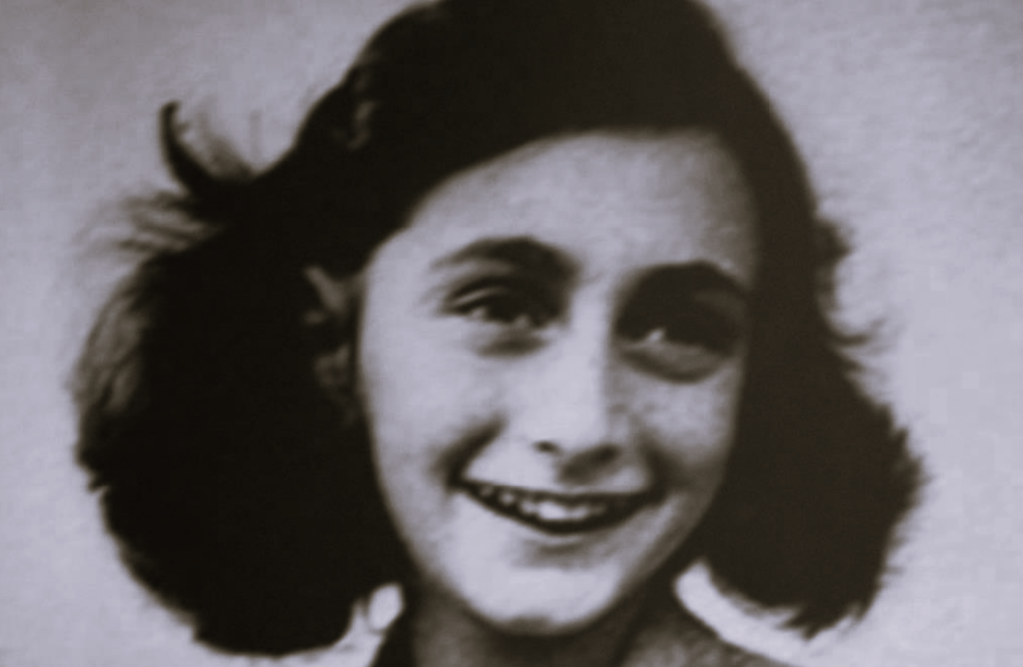
Anne Frank wrote of the news in her diary: ‘Rauter, some German bigwig, recently gave a speech. “All Jews must be out of the German-occupied territories before July 1st. The province of Utrecht will be cleansed of Jews (as if they were cockroaches) between April 1st and May 1st, and the provinces of North and South Holland between May 1st and June 1st. These poor people are being shipped off to filthy slaughterhouses like a herd of sick and neglected cattle. But I’ll say no more on the subject. My own thoughts give me nightmares!”
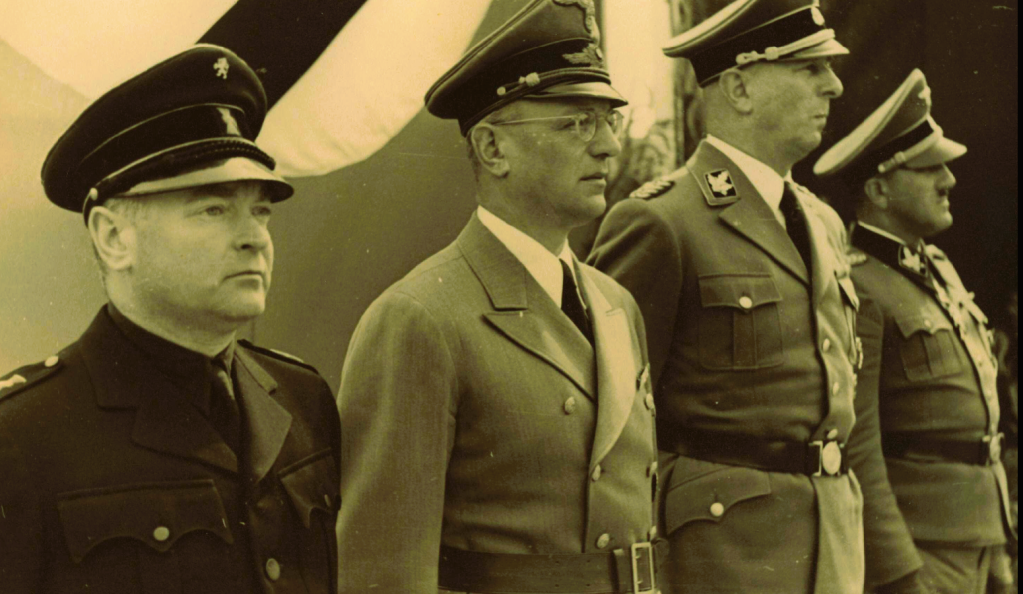
As I said earlier there were many Dutch involved in governing the Netherlands during World War 2. One of them was the leader of the NSB, the Dutch Nazi Union. Anton Mussert. Seen above on the left standing next to Adriaan Anton Hanns Albin Rauter and Arthur Seyss-Inquart,
Rauter was the main instigator of terror through summary arrests and internment in the Netherlands. The SS set up a concentration camp named Herzogenbusch after the city of ‘s-Hertogenbosch but located in the neighboring town of Vught gave the camp its name—Kamp Vught. In total this camp detained 31,000 people, of whom about 735 were killed.
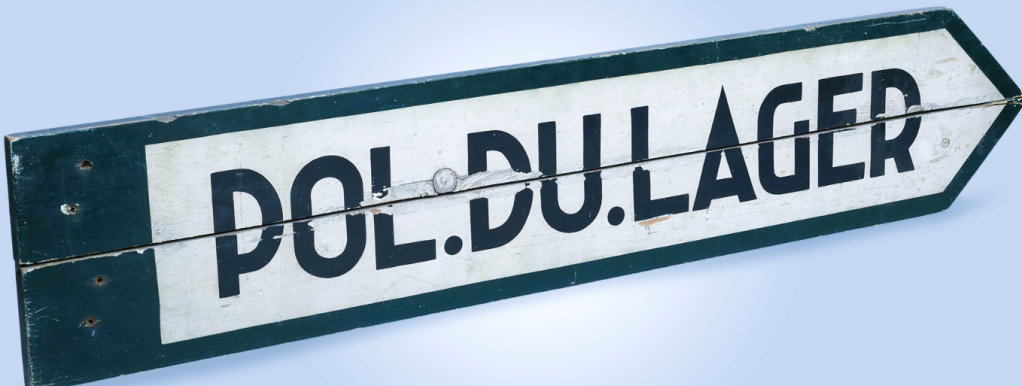
Also, his SS manned a so-called polizeiliches Durchgangslager or police transit camp near Amersfoort, known as Kamp Amersfoort, in fact, a concentration camp, where approximately 35,000 people were detained and maltreated and 650 people (Dutch and Russian) died.
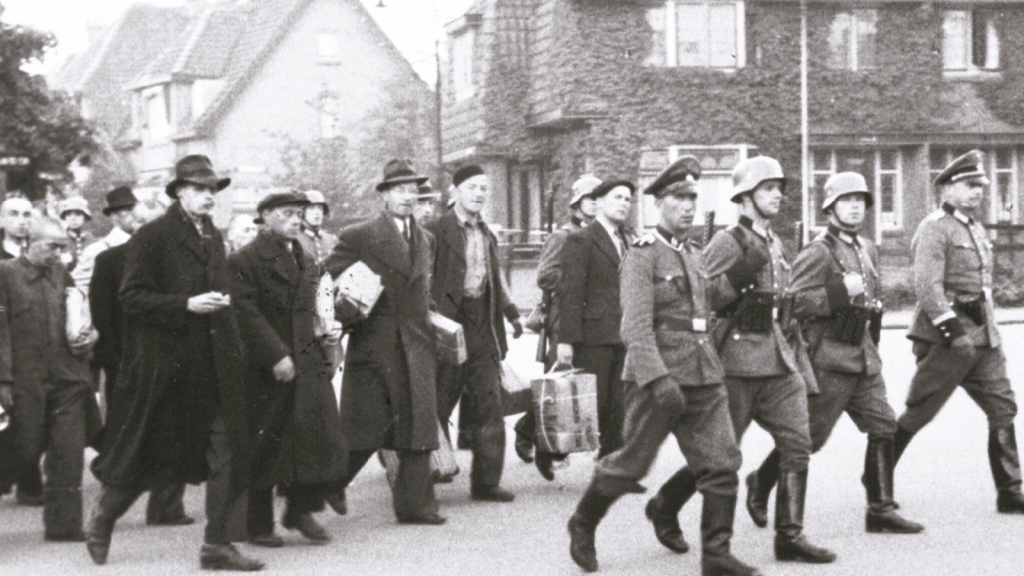
Rauter’s SS also managed the Kamp Westerbork (Polizeiliches Durchgangslager Westerbork), the place from which 110,000 plus Dutch Jews were deported to Nazi concentration and extermination camps, mainly Auschwitz and Sobibor.
75% of all Dutch Jews and Jews living in the Netherlands were murdered by the Nazis. Additionally, almost 20,000 Dutch people were arrested because of their work with the resistance, of which, two thousand resistance fighters were executed. Others were sent to detention centers or to concentration camps. Hanns Albin Rauter was one of the main architects.
On the night of 6 March 1945, Rauter was severely injured in a resistance attack. A day later, the Germans executed 263 political prisoners in retaliation. When the war ended, Rauter was still recovering in a German hospital, where he was arrested by the British. Rauter was handed over to the Dutch government by the British, in 1948, and was tried by a special court in The Hague. Rauter was sentenced to death on May 4th, 1948. He appealed to the Court of Cassation on May 12, 1948. The case was tried for the Bijzondere Raad van Cassatie (‘special court of cassation’) on October 20th and 22nd, 1948 in the building of the Hoge Raad (‘supreme court’) of the Netherlands. The death sentence was confirmed on January 12, 1949. He was executed on March 25, 1949.

Rauter, like several other high-ranking Nazis, had a scar on his cheek. This was not caused by the war but was as a result of dueling. These so-called dueling scars (or “Schmisse” in German) have been seen as a badge of honor since as early as 1825. Alternatively referred to as “Mensur scars,” “smite,” “Schimitte,” or “Renommierschmiss,” they became popular among upper-class Austrians and Germans involved in academic fencing at the start of the 20th century. Consequently, many of these same upper-class men who fashioned them found themselves wearing German army uniforms in both World War I and II. German military laws permitted men to wage duels of honor until World War I. During the Third Reich, the Mensur was prohibited at all universities following the party line.

Donation
I am passionate about my site and I know you all like reading my blogs. I have been doing this at no cost and will continue to do so. All I ask is for a voluntary donation of $2, however if you are not in a position to do so I can fully understand, maybe next time then. Thank you. To donate click on the credit/debit card icon of the card you will use. If you want to donate more then $2 just add a higher number in the box left from the PayPal link. Many thanks.
$2.00
Sources
https://discover.hubpages.com/education/Dueling-Scars-The-Nazi-Officer-Badge-of-Honor
https://www.oorlogsbronnen.nl/tijdlijn/Hanns-Albin-Rauter/03/0004
https://www.annefrank.org/en/timeline/162/rauter-wants-to-run-all-jews-from-the-provinces



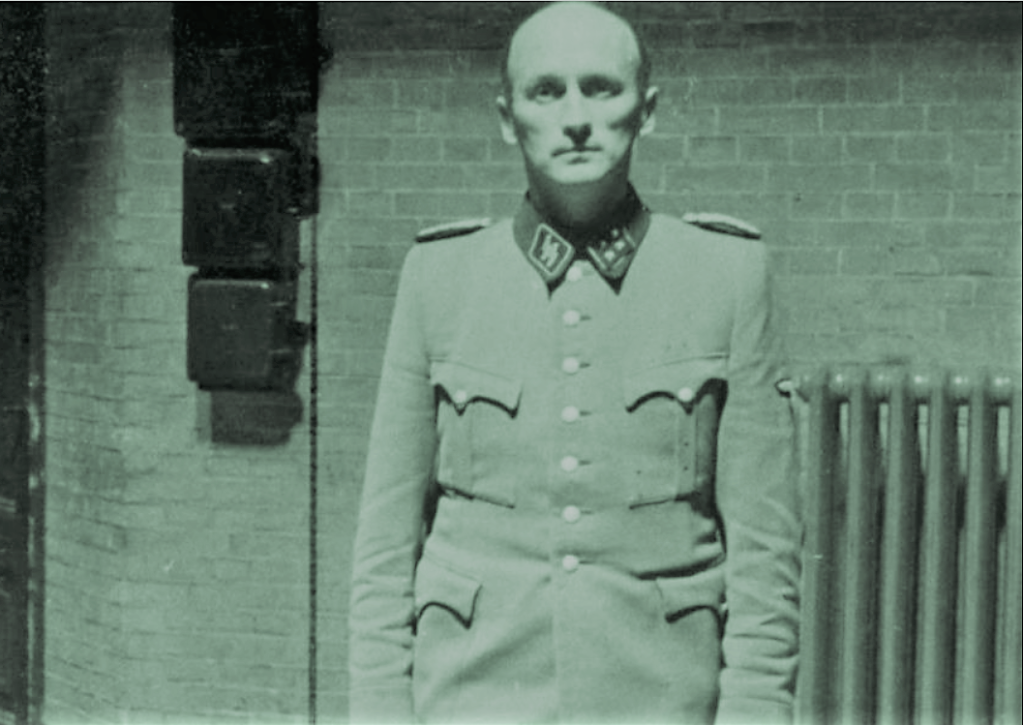





























You must be logged in to post a comment.